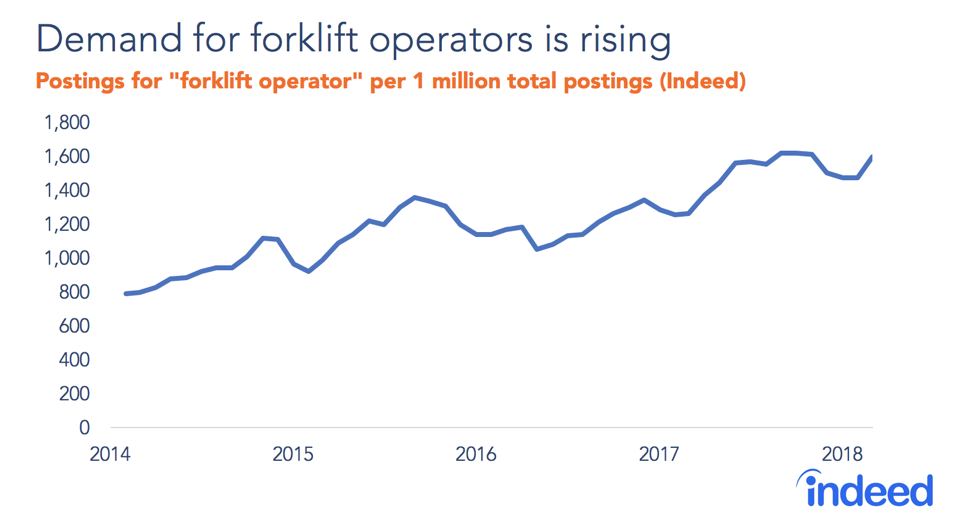Demand for forklift operators has been steadily rising for the last four years. Job postings for forklift operators on Indeed have doubled as a share of all postings, from around 787 per million in February 2014 to 1,595 per million as of March 2018.

The Great Recession and subsequent slow recovery took a devastating toll on forklift drivers. Total employment for “Industrial Truck and Tractor Operator” (as the BLS labels the occupation that includes forklift drivers/operators) stood at 631,000 in 2007, just before a tsunami of job losses. Between 2010 and 2012, with the Great Recession technically over and many other hard-hit occupations slowly recovering in employment, forklift drivers continued to see job losses. By 2012, employees holding this occupation had declined to 497,000. That’s a massive 21% decline over five years.
But something began to change starting in 2012: Employment for forklift drivers began rising. As of 2016, it stood at 542,750, a 9% increase over four years. This expansion coincided with the explosive rise of ecommerce and the adjacent warehousing industry. Warehousing is, by far, the largest industry that employs forklift drivers; they make up over 15% of all warehousing employees. As Amazon and other ecommerce companies leveraged the internet to expand, warehousing employment grew, too. And with it, forklift driving as an occupation was resurrected.
That said, forklift drivers don’t earn a lot of money. The average worker makes about $17 per hour; but that is more than double the national minimum wage. And wages for forklift drivers have languished, rising only 21% between 2004 and 2016. The average hourly earnings for production and nonsupervisory employees were up 40%. Wages grew more strongly between 2013 and 2016, but forklift driving isn’t going to become lucrative anytime soon. While pay increases still seem to be meager for forklift drivers, at least the jobs are more plentiful.






